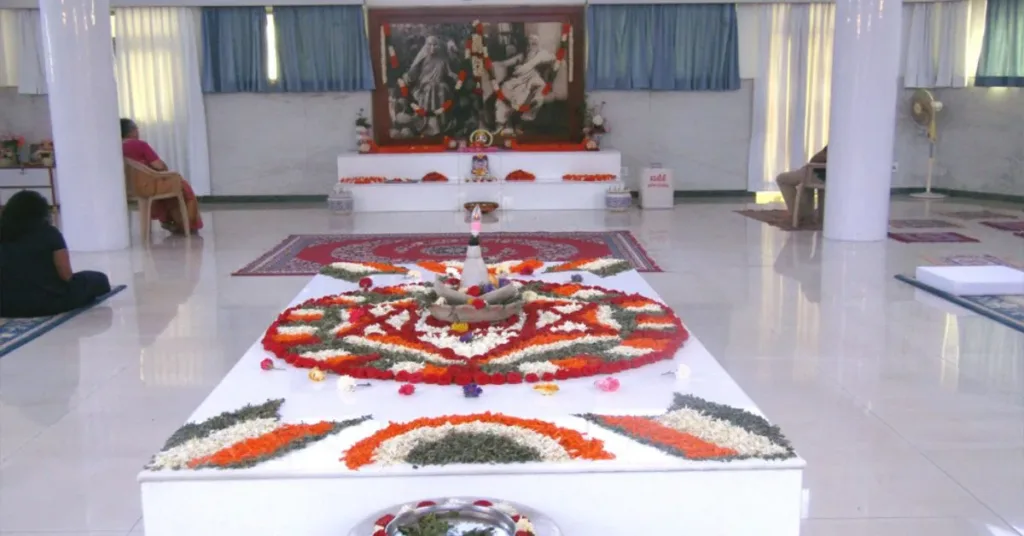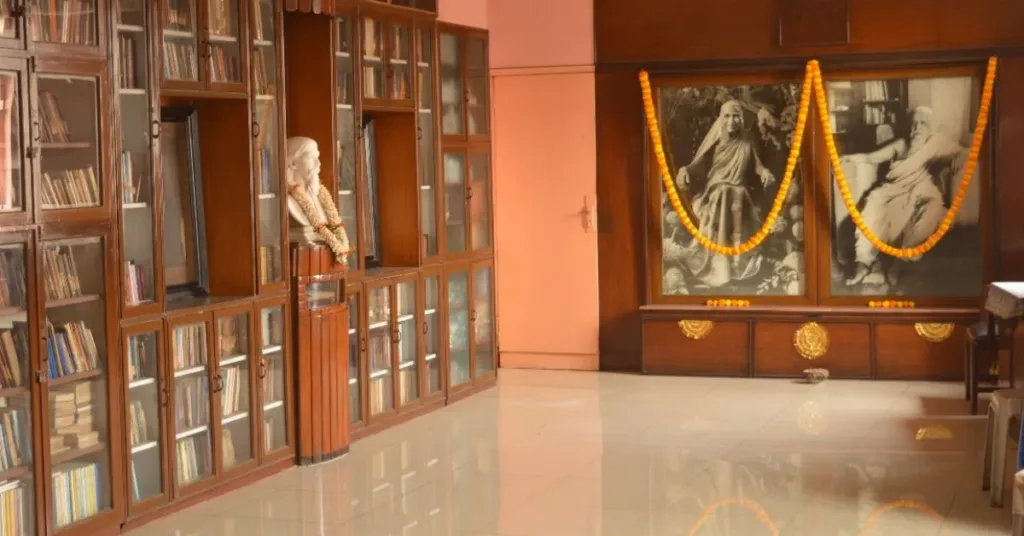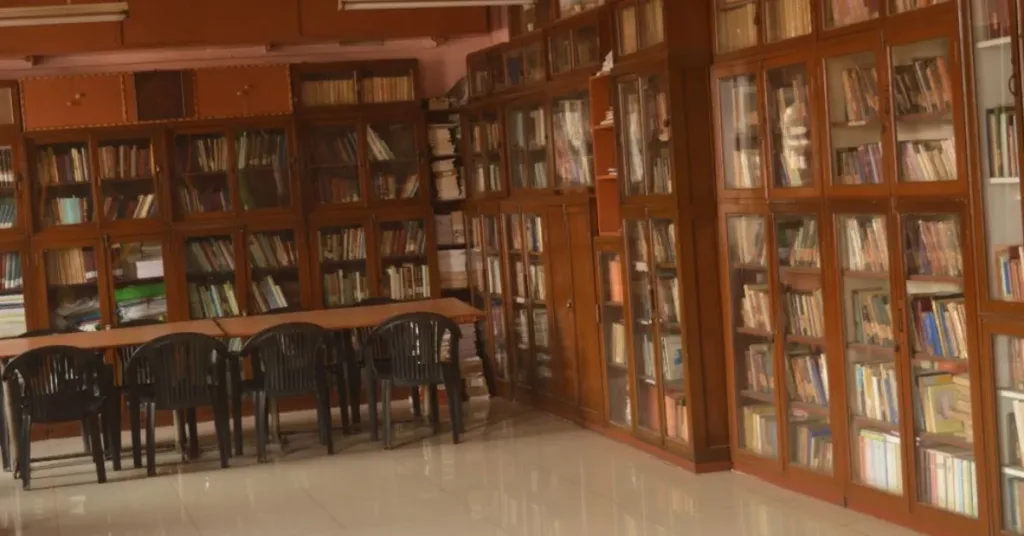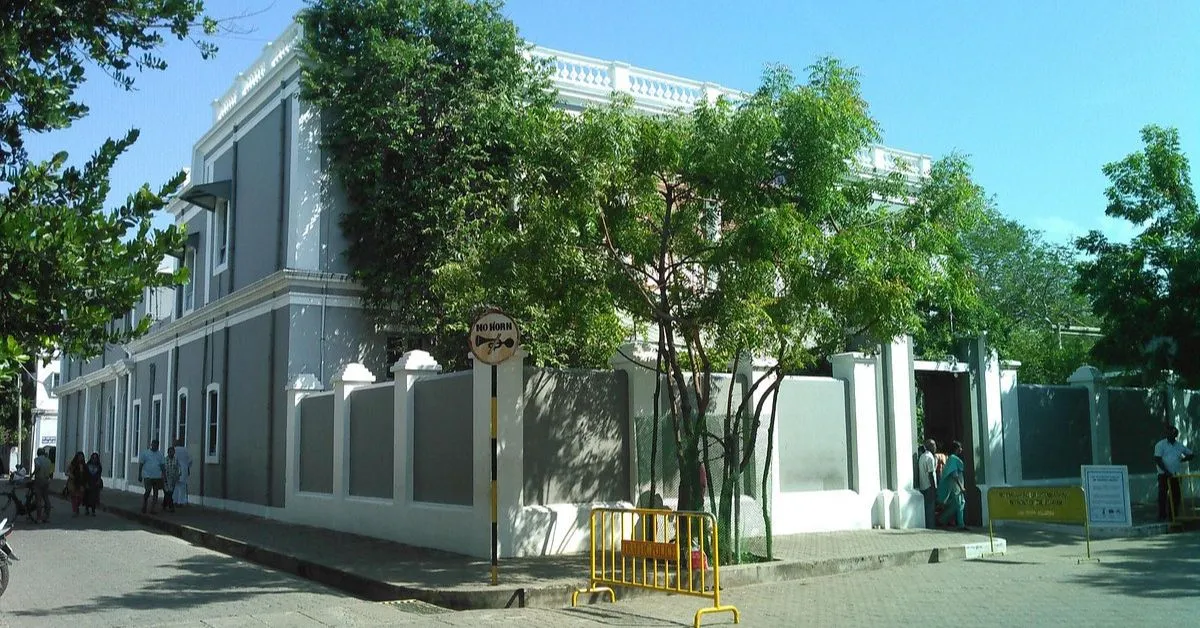Nestled along the serene coastline of Puducherry, Aurobindo Ashram stands as a beacon of spiritual enlightenment. Founded in 1926 by Sri Aurobindo and The Mother, this ashram is more than just a retreat; it’s a place where seekers from around the world come to find inner peace and personal transformation.
The ashram’s teachings are based on integral yoga, a philosophy that aims to harmonize the body, mind, and spirit. Visitors can immerse themselves in the peaceful atmosphere, participate in meditation sessions, and explore the profound writings of Sri Aurobindo and The Mother.
How to reach:
By Air:
- Chennai International Airport: The nearest major airport is in Chennai, about 150 kilometers away. Take a taxi or bus to Puducherry (3-4 hours).
- Puducherry Airport: Offers limited domestic flights. Located 5 kilometers from the ashram.
By Train:
- Puducherry Railway Station: Just 2 kilometers away. Well-connected to major cities. Take an auto or taxi to the ashram.
By Road:
- Chennai: 3-4 hours via ECR or NH32. TNSTC and private buses operate regularly.
- Bangalore: 310 kilometers away.
- Other cities: Tiruchirappalli and Madurai.
Local Transportation:
- Auto-rickshaws: Common and affordable.
- Taxis: Available for longer distances.
- Walking: Ideal for exploring the French Quarter.
- Bicycle rentals: Many hotels and guesthouses offer them.
Best time to visit:
- Winter (October to March): This is the peak season. Enjoy comfortable weather and immerse yourself in spiritual practices.
- Monsoon (July to September): Experience the rejuvenating beauty of the region, but be prepared for occasional rain.
- Summer (April to June): Hot and humid. Explore early mornings and late evenings. Enjoy indoor activities during the afternoons.
Attractions:
The Samadhi of Sri Aurobindo and The Mother:

The Samadhi is the spiritual center of Aurobindo Ashram. Here, the sacred remains of Sri Aurobindo and The Mother rest. Enclosed in a simple marble structure, the Samadhi is surrounded by beautiful gardens cared for by devotees. The atmosphere is peaceful, inviting visitors to meditate or offer flowers.
The Samadhi represents the enduring legacy of Sri Aurobindo and The Mother’s teachings. For many, it’s not just a monument but a living presence. Sitting near the Samadhi, amidst the quiet reverence of others, leaves one with a deep sense of peace and connection to the divine.
The Ashram Library:
The Ashram Library is a wonderful place to explore the teachings of Sri Aurobindo and The Mother. It has a large collection of books on philosophy, yoga, spirituality, and more. The library is a peaceful place to learn and understand these spiritual leaders. You can read the complete works of Sri Aurobindo, including his famous poem “Savitri.” The library also has books by The Mother, who shared her spiritual insights and practical wisdom. Whether you’re a scholar or just curious, the library offers a space to learn and grow.

The Reading Room:

Next to the library is the Reading Room. It’s a peaceful place to read and think. The room has books by Sri Aurobindo and The Mother, as well as magazines and journals about personal growth and integral yoga. The Reading Room is very quiet, which is good for focusing on the wisdom in the books. Spending time here can be a meditative experience. The room has big windows that let in natural light, making it even more peaceful.
The Ashram Art Gallery:
The Ashram Art Gallery shows The Mother’s beautiful paintings, photographs, and other artwork. These pieces tell a story about her creative mind and spiritual vision. The Mother believed that art should express the divine, and this is clear in her work.
The gallery isn’t just for art lovers; it’s a place where visitors can connect with the spiritual side of creativity. The Mother’s paintings, often abstract and symbolic, invite viewers to interpret them through their own spiritual experiences. The gallery also has photographs of Sri Aurobindo, The Mother, and early ashram life, showing the ashram’s history.

Local Experiences:
- French Quarter: Wander through the charming streets, admire the colonial architecture, and enjoy the vibrant atmosphere.
- Manakula Vinayagar Temple: Visit this historic temple dedicated to Lord Ganesha, known for its intricate carvings.
- Auroville: Take a day trip to this experimental township and visit the Matrimandir, a spiritual and architectural marvel.
- Promenade Beach: Relax and enjoy the stunning views of the Bay of Bengal.
- Cycling: Explore the town at your own pace by renting a bicycle.
- Local Markets: Shop for fresh produce, spices, textiles, and handmade crafts.
- South Indian Cuisine: Indulge in delicious local food, from traditional meals to French-inspired dishes.
- Puducherry Museum: Learn about the region’s history, artifacts, and cultural heritage.
- Cultural Events: Participate in local events like Bharatanatyam performances or music concerts.
- Yoga and Meditation: Deepen your practice by joining classes offered by various centers in Puducherry.
Travel tips:
- Dress Modestly: Wear comfortable and modest clothing.
- Respect the Silence: Maintain silence in meditation and reflection areas.
- No Photography: Avoid photography inside the ashram.
- Stay Hydrated: Carry a water bottle and stay hydrated.
- Remove Footwear: Take off your shoes before entering the ashram or temples.
- Plan for Auroville: Book your Matrimandir visit in advance.
- Use Public Transportation: Use auto-rickshaws or rental bikes. Negotiate fares.
- Carry Cash: Some places may prefer cash payments.
- Avoid Plastic: Use reusable bags and bottles.
- Sun Protection: Apply sunscreen, wear sunglasses, and a hat.
- Respect Local Customs: Be mindful of local customs and practices.
- Plan for Monsoon: Carry an umbrella or raincoat if visiting during the monsoon.
- Stay Updated: Check local guidelines for visiting hours and any restrictions.
Conclusion
Immerse yourself in the depths of spirituality and self-discovery at Aurobindo Ashram, Puducherry. This isn’t just a destination; it’s a transformative experience curated on Xplro.com, your one-stop travel guide to enriching adventures. Whether you seek inner peace, a deeper understanding of Sri Aurobindo and The Mother’s teachings, or simply a tranquil escape, the ashram offers a sanctuary for the soul. Amidst a serene environment steeped in rich cultural and spiritual heritage, Puducherry allows time to slow down as you reconnect with your inner self. Leave the ashram carrying not just memories of a peaceful retreat, but a sense of renewal and a deeper connection to the spiritual essence of life. A visit to Aurobindo Ashram, meticulously crafted on Xplro.com, will stay with you long after you return home, offering a continuous source of inspiration on your spiritual journey.
FAQs
1. What is Aurobindo Ashram?
- Aurobindo Ashram is a spiritual center located in Puducherry, founded by Sri Aurobindo and The Mother. It focuses on integral yoga and provides a space for meditation, learning, and personal spiritual growth.
2. Who was Sri Aurobindo?
- Sri Aurobindo was an Indian philosopher, yogi, and poet who developed integral yoga, a holistic approach to spiritual development that integrates mind, body, and spirit.
3. Who was The Mother?
- The Mother, born Mirra Alfassa, was a close spiritual collaborator of Sri Aurobindo. She played a significant role in establishing and guiding the ashram, and her teachings continue to influence spiritual seekers worldwide.
4. Is Aurobindo Ashram open to everyone?
- Yes, the ashram welcomes visitors of all backgrounds. Visitors can engage in meditation, explore the premises, and participate in activities, as long as they adhere to the ashram’s guidelines.
5. What are the visiting hours for Aurobindo Ashram?
- The ashram is typically open to visitors from 8:00 AM to 12:00 PM and from 2:00 PM to 6:00 PM. It is advisable to confirm current timings before visiting, as they may change during holidays or special events.
6. Are visitors allowed to take photographs inside the Aurobindo Ashram?
- Photography is prohibited within the ashram to preserve its tranquil and contemplative environment. Visitors are asked to respect this rule.
7. Can I stay at Aurobindo Ashram?
- The Aurobindo Ashram offers accommodation in its guest houses for visitors who wish to stay on the premises. Reservations are recommended, as space can be limited. Staying at the ashram allows for a deeper immersion in its spiritual practices.
8. Are there meditation sessions available for visitors?
- Yes, the Aurobindo Ashram provides opportunities for visitors to participate in meditation. The Meditation Hall is open for individual meditation or group sessions, depending on availability.
9. What is the significance of the Samadhi at Aurobindo Ashram?
- The Samadhi is the resting place of Sri Aurobindo and The Mother. It is a revered site where visitors come to meditate, reflect, and pay homage, contributing to the ashram’s spiritual atmosphere.
10. How can I explore Sri Aurobindo’s teachings?
- The ashram’s library and reading room contain a wealth of resources, including the works of Sri Aurobindo and The Mother. Additionally, workshops and lectures are offered to deepen understanding of their teachings.
11. Is there a specific dress code for visiting the Aurobindo Ashram?
- While there is no formal dress code, visitors are encouraged to dress modestly and comfortably. Light and breathable clothing is suitable for Puducherry’s warm climate.
12. What other activities are available in Puducherry?
- Besides visiting the Aurobindo Ashram, Puducherry offers various activities such as exploring the French Quarter, relaxing at Promenade Beach, visiting Auroville, and enjoying local cuisine and cultural sites.






